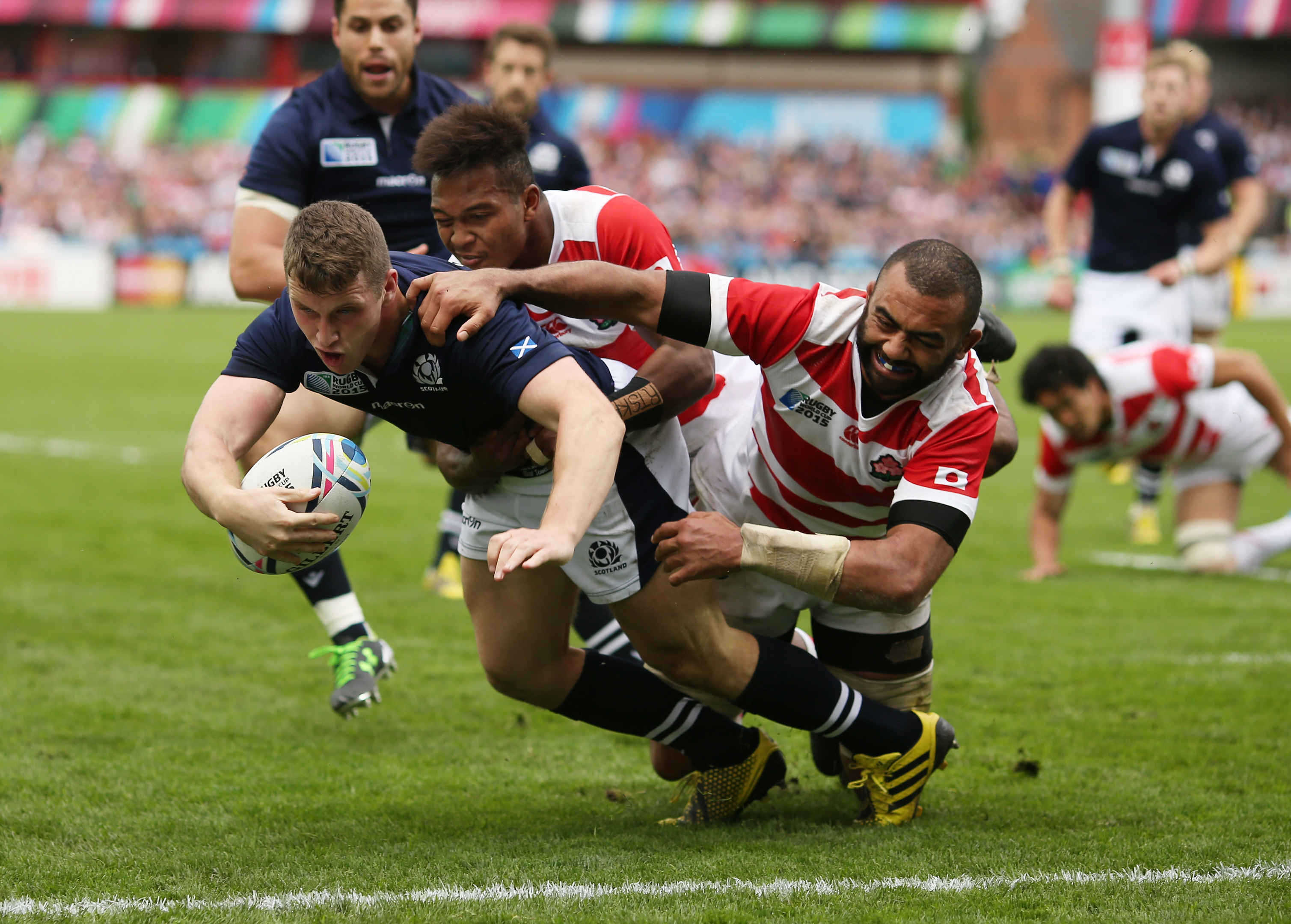Scotland predictably got a backlash from the Rugby World Cup schedulers for 2019 facing the Pool top seeds in their first game and precious little recovery time for the final pool match against Japan.
The Scots, in Pool A, will face top seeds Ireland on September 22 in their tournament opener, in the International Stadium in Yokohama, which is also the venue for the final.
The Scots return to Yokohama for their final pool game against hosts Japan on October 13, but with just four days of recovery time from their penultimate match against the Europe 1 qualifier – most likely to be Romania or Spain.
This might be mere coincidence but it’s notable that it was Japan who had the short recovery in the last tournament in England in 2015 before playing Scotland. Just four days after their now-legendary 34-32 victory over South Africa in Brighton, the Japanese – then under the current England coach Eddie Jones – were routed 45-10 by a fresh Scotland at Gloucester.
However the Scots’ task four days before against Spain or Romania – one of whose current coaches, Rob Moffat, is a Scot – gives head coach Gregor Townsend some scope to rest frontline players, dependent of course on how the Scots go in the previous two pool games.
After opening against the Irish, Scotland head to the Kobe Misaki Stadium on September 30 to face the as-yet known Play-Off winner – likely to be Samoa, who finished third in the Oceania qualifying and will have to play a further match against the second placed team in the Europe qualifier to reach the finals.
The Scots then will play the Europe 1 qualifier, which will be known in March of next year, at the Shizuoka Stadium in Ecopa. Currently Romania and Spain are at the top of the qualifying group with three wins from four games, with four still to play.
If Scotland qualify from their Pool they will play either the winner or runner-up from Pool B, where defending champions New Zealand have been drawn with twice winners South Africa.
Townsend was happy with the schedule even with such a formidable tournament opener.
“Obviously there’s a lot of excitement that comes with knowing who you’re playing, when and at what venues.
“We’ll face a real challenge in all of our games, starting with Ireland who are currently ranked fourth in the world.
“Facing Ireland in the opening round really focuses the mind on just how big a challenge this tournament is going to be, on top of the prospect of facing the hosts, who had a brilliant World Cup in 2015.”
Townsend will travel to Japan after the Autumn Internationals to continue the logistical planning and preparations for the tournament. Scotland already have a strategic alliance with the Japanese City of Nagasaki, who will host a holding camp for the national team’s world cup squad in 2019 on the eve of the tournament.
It will enable the squad to acclimatise to Japanese conditions and the time differences before heading into their official tournament camp.
He added: “The tournament is very much on the horizon for our players and staff. The important thing will be to continue building and improving over the next two years.”
